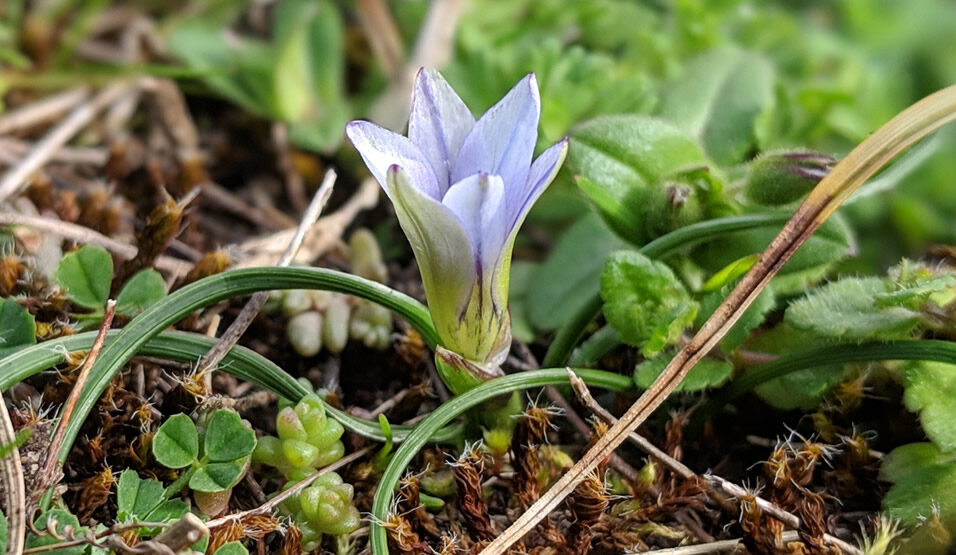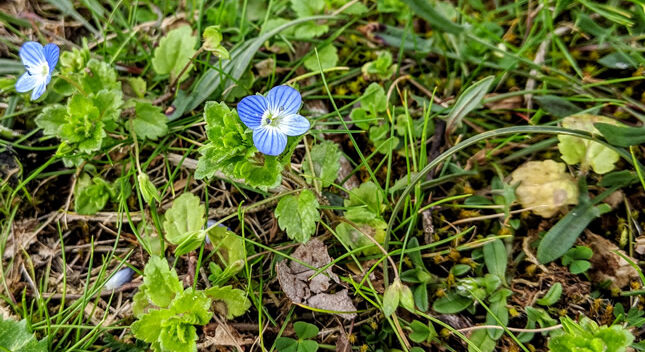Flora & Fauna at the Warren Golf Club
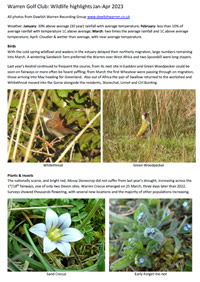 Latest wildlife newsletter: December 2023 to February 2024 Wildlife Highlights
Latest wildlife newsletter: December 2023 to February 2024 Wildlife Highlights
Previous wildlife newsletters: May to August wildlife highlights | April 2023 wildlife highlights | September 2022 wildlife highlights | June 2022 Wildlife update | March 2022 Wildlife update
The Warren Golf Club’s beautiful links course is situated on a sand spit at the mouth of the Exe Estuary, which affords players picturesque views of the estuary and the sea, and a stunning natural setting in which to play golf.
The Warren is a unique and environmentally sensitive piece of land: the course is home to a range of habitats which support an impressive diversity of flora and fauna, from reptiles and wading birds to sand wasps and rare plants.
Until recently, it was the only place in the UK home to the Sand Crocus (or Warren Crocus), Romulea columnae.
Each year, around 180 different bird species are recorded around the Warren, including many birds from places as far-flung as Greenland and Siberia who travel thousands of miles to overwinter here.
The spit is also home to nearly 600 different kinds of flowering plants and somewhere in the region of 2,000 species of invertebrate. This rich biodiversity over such a small area is due in large part to the variety of habitat types within the reserve, several of which are found on the golf course itself.
Due to the site’s critical ecological importance, the land is recognised as:
- a Local and National Nature Reserve,
- a Site of Special Scientific Interest (SSSI),
- a Ramsar Wetland of International Importance,
- a Special Area of Conservation (SAC)
- and a Special Protection Area under the EC Birds Directive.
These various designations reflect the biodiversity found here and highlight the site’s value to both people and nature. As a result, there are restrictions on the activities that we can undertake to maintain the course, due to the impact they might have on nature.
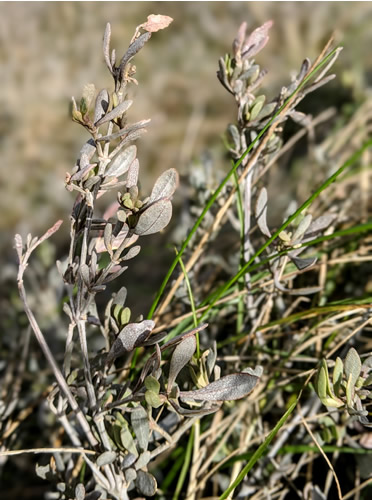
Sea Purslane at the estuary edge near the 15th fairway
The Warren Golf Club is working with the Devon Wildlife Trust and Natural England to produce a course management plan which will provide us with a framework to manage the land sensitively for both nature and golf. The club recognises that ensuring we give due consideration to the enormous natural value of the site only serves to enhance the fantastic links golf played here.
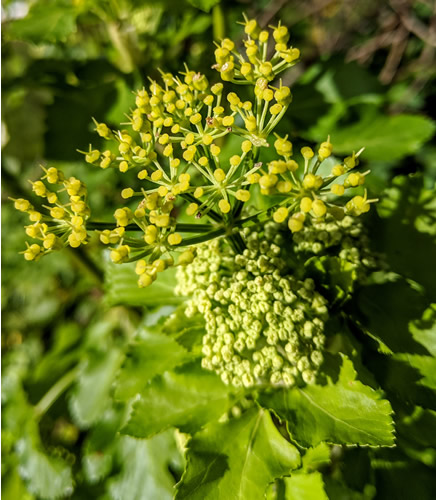
Alexanders (horse parsley) growing by the 2nd tee

Common Stork’s-bill flowering beside the curly grass-like leaves of the Warren Crocus
Conservation and ecological monitoring initiatives conducted around the course
We are also pleased to follow conservation and ecological monitoring initiatives conducted around the course.
If you are interested in exploring the species recorded here, or in learning more about monitoring programmes conducted by local and national conservation organisations, please explore the links below:
- The Dawlish Warren Recording Group: http://www.dawlishwarren.co.uk/.
- The Recording Group’s regularly updated latest sightings page can be found at http://dawlishwarren.blogspot.com/.
- And the Twitter account! https://twitter.com/WarrenBirding
- The 2022 bird report can be found at http://www.dawlishwarren.co.uk/2022-Bird-Report.pdf
- The 2021 Wildlife Review can be found at http://www.dawlishwarren.co.uk/WildlifeReview2021.pdf (2022 coming shortly)
- The Exe Estuary Oystercatcher Project: http://www.dawlishwarren.co.uk/oystercatchers.html
- The British Trust for Ornithology Wetland Birds Survey: https://www.bto.org/volunteer-surveys/webs

Oystercatchers near the 12th

